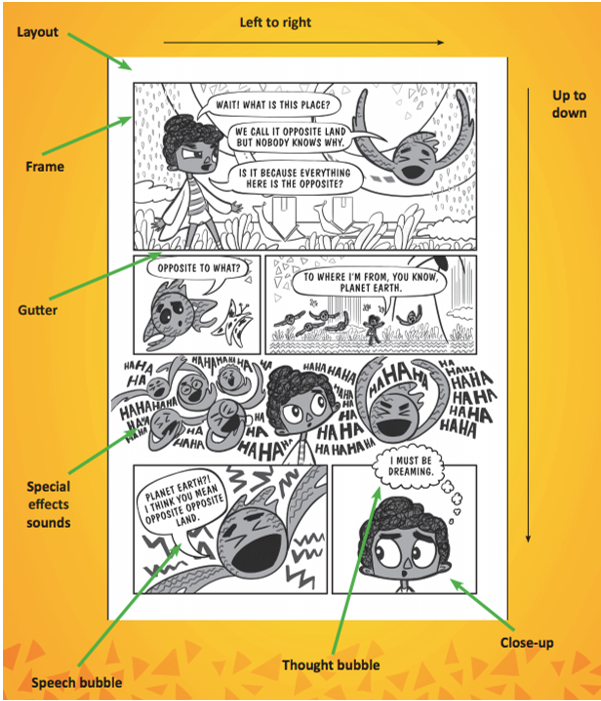Portrayals of Iranian Women in Marjane Satrapi’s “Embroideries (2005)”: A Multimodal Analysis
Keywords:
Portrayals of Iranian women, gender stereotype, Multimodal Analysis (MA), Marjane Satrapi, EmbroideriesAbstract
Since the lives of veiled women especially in Iran have become academic interests regarding gender stereotype and sexism, several studies have purposed various perspectives on how they live, struggle and negotiate their power in the society. To extend this line of research, this study therefore aims at investigating the portrayals of Iranian women in Marjane Satrapi’s Embroideries by employing Multimodal Analysis (MA). Words and images were takeninto account for analysis that were then divided into five main issues to discuss: colors, symbolic embroideries, Satrapi’s grandmother, speech bubble and panel frame and universal topics. The findings revealed that women’s rights in Iran are oppressed by patriarchal and religious tradition, which ideologically align with the Middle East women stereotype. Interestingly, this memoir also portrays the images of Iranian women that contradict the traditions by presenting the pictures of unveiled women and the issues of plastic surgery and surgical procedure of women’s virginity restoration discussed among them. In addition to this, the author presents the hidden part of Iranian women, behind the closed door when men are away, where they straighten their power by using the universal strategy just like all women in the whole world do – gossip –to survive the hardship. However, the limitation of this study is recognized as the story was narrated through only the author’s lens. Therefore, the results and interpretations were specific and limited and might not be generalized to all women in Iranian society.
References
Acho, K. (2013). Unveiling the Middle Eastern Memoir: Reconfiguring Images of Iranian Women Through Post-9/11 Memoirs. (Unpublished bachelor’s thesis). University of Michigan.
Attenberg, J. (2005). Needle Points Comic memoirist Marjane Satrapi's Embroideries celebrates her grandmother's wisdom-on sex. PRINT -NEW YORK THEN CINCINNATI, 59(3), 100-101.
Baykal, N. (2016). Multimodal construction of female looks: An analysis of mascara Advertisements. Dilbilim Araştırmaları Dergisi, 27(2), 39-59.
Bing, J. (2007). Liberated jokes: Sexual humor in all-female groups. Humor–International Journal of Humor Research, 20(4), 337-366.
Campbell, E. (2007). What is a graphic novel?. World Literature Today, 81(2), 13.
Chapman, C. (2010, January 28). Color Theory for Designers, Part 1: The Meaning of Color. Retrieved October 10, 2019, from: https://www.smashingmagazine.com/2010/01/color-theory-for-designers-part-1-the-meaning-of-color/.
Embroidery. (n.d.). In Cambridge Dictionary. Retrieved October 15, 2019, from: https://dictionary.cambridge.org/dictionary/english/embroidery.
Embroidery. (n.d.). In Oxford Learner's Dictionaries. Retrieved October 15, 2019, from: https://www.oxfordlearnersdictionaries.com/definition/english/embroidery?q=embroider.
Freely, M. (2005, June 25). Tea and adversity. Retrieved December 12, 2019, from: https://www.theguardian.com/books/2005/jun/25/comics.
Hamlyn, R. C. (2017). Getting to know graphic novels: A guide to using graphic novels in the classroom. Retrieved September 17, 2020, from: https://prh.azureedge.net/resources/TR_OppositeLand.pdf.
Hannele, K.-R., & Marie-Nathalie, J. (2018). Using colour semiotics to explore colour meanings. Qualitative Market Research: An International Journal, 21(1), 101-117.
Jelodar, E. Z., & Yusof, N. M. D. (2014). Black and White Memories: Re-inscription of Visual Orientalism in Embroideries. 3L: Southeast Asian Journal of English Language Studies, 20(3), 63-78.
Jing, L. (2013). Visual Images Interpretive Strategies in Multimodal Texts. Journal of Language Teaching & Research, 4(6), 1259-1263.
Lundell, T. (1993). An experiential exploration of why men and women laugh. International Journal of Humor Research, 6(3), 299-318.
Mashak, S. P., Pazhakh, A., & Hayati, A. (2012). A Comparative Study on Basic Emotion Conceptual Metaphors in English and Persian Literary Texts. International Education Studies, 5(1), 200-207.
Mozaffari, N. (2006). Roya Hakakian's Journey from the Land of No: A Girlhood Caught in Revolutionary Iran; Azadeh Moaveni's Lipstick Jihad: A Memoir of Growing Up Iranian in America and American in Iran; and Marjane Satrapi's Embroideries. Women's Studies Quarterly, 34(1/2), 516-527.
O'Halloran, K. L. (2006). Multimodal discourse analysis: systemic-functional perspectives. Continuum.
Olson, R. (2005). Embroideries. Booklist, 101(15), 1351-1351.
Patel, D. S. (2012). Concealing to reveal: The informational role of Islamic dress. Rationality and Society, 24(3), 295-323.
Reyns-Chikuma, C., & Lazreg, H. B. (2017). Marjane Satrapi and the Graphic Novels from and about the Middle East. Arab Studies Quarterly, 39(1), 758-775.
Saunders, K. (2005). Survival strategies Embroideries by Marjane Satrapi. New Statesman, 134(4744), 53-54.
Satrapi, M. (2005). Embroideries. New York: Pantheon.
Smith, J. M., & Pole, K. (2018). What's Going on in a Graphic Novel? Reading Teacher, 72(2), 169-177.
Whitlock, G. (2008). From Tehran to Tehrangeles: The generic fix of Iranian exilic memoirs. ARIEL: A Review of International English Literature, 39(1-2), 7-27.
Worth, J. (2007). Unveiling: Persepolis* as Embodied Performance. Theatre Research International, 32(2), 143-160.

Downloads
Published
How to Cite
Issue
Section
License
Copyright (c) 2021 Phayao University

This work is licensed under a Creative Commons Attribution-NonCommercial-NoDerivatives 4.0 International License.
ผู้นิพนธ์ต้องรับผิดชอบข้อความในบทนิพนธ์ของตน มหาวิทยาลัยพะเยาไม่จำเป็นต้องเห็นด้วยกับบทความที่ตีพิมพ์เสมอไป ผู้สนใจสามารถคัดลอก และนำไปใช้ได้ แต่จะต้องขออนุมัติเจ้าของ และได้รับการอนุมัติเป็นลายลักษณ์อักษรก่อน พร้อมกับมีการอ้างอิงและกล่าวคำขอบคุณให้ถูกต้องด้วย
The authors are themselves responsible for their contents. Signed articles may not always reflect the opinion of University of Phayao. The articles can be reproduced and reprinted, provided that permission is given by the authors and acknowledgement must be given.







